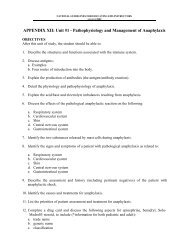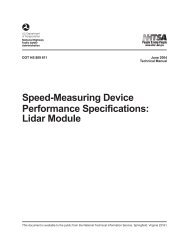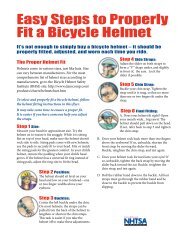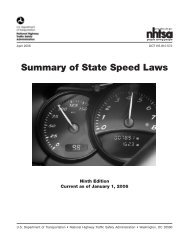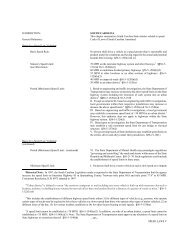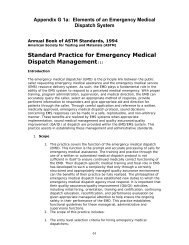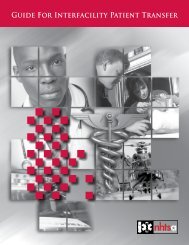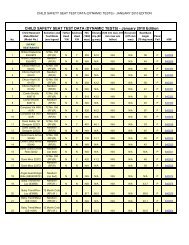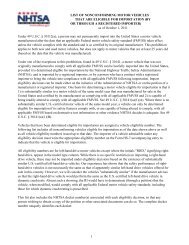The Criminal Justice System: A Guide for Law Enforcement ... - NHTSA
The Criminal Justice System: A Guide for Law Enforcement ... - NHTSA
The Criminal Justice System: A Guide for Law Enforcement ... - NHTSA
You also want an ePaper? Increase the reach of your titles
YUMPU automatically turns print PDFs into web optimized ePapers that Google loves.
to counsel and arranges <strong>for</strong> counsel to be provided without cost if the defendant is<br />
indigent, and (3) considers the matter of bail.<br />
In the typical felony prosecution, the defendant will first be arraigned in a local<br />
criminal court, then, after the case moves to a superior court through a grand jury<br />
indictment or a waiver of indictment, the defendant will be arraigned in the superior<br />
court. Again, the specifics will vary between States.<br />
Arrest Taking a suspect into custody <strong>for</strong> the purpose of prosecution on a criminal<br />
charge. To be legal, an arrest must be based on probable cause—a belief that it is more<br />
likely than not that the suspect has committed an offense.<br />
An arrest may be made with or without an arrest warrant. In general, an arrest<br />
warrant is not necessary if the police officer can take the suspect into custody in a public<br />
place. If the suspect is in a private place such as a residence, the officer generally cannot<br />
enter the residence to make the arrest unless there is an arrest warrant reciting the<br />
residence as the suspect’s address, or the officer obtains a search warrant <strong>for</strong> the<br />
residence, or someone in the residence voluntarily allows the police to enter. <strong>The</strong>re are<br />
exceptions to this “do not enter” rule which are beyond the scope of this document.<br />
Arrest Warrant A judge’s written authorization to take an identified suspect into<br />
custody. To obtain an arrest warrant, a police officer must file papers with the court<br />
providing probable cause to believe that the individual has committed a crime.<br />
An impartial judge will review the evidence and determine if it is more likely<br />
than not that the defendant committed the acts (“probable cause”). Once the warrant is<br />
signed by the judge, if the suspect cannot be found, an arrest warrant may be entered in<br />
the national computer system to alert the wanting agency if the suspect is stopped by<br />
another agency. One disadvantage to the police in getting an arrest warrant is that the<br />
filing of the papers with the court may trigger the suspect’s right to counsel, so there<br />
can be no questioning of the suspect after arrest, unless an attorney is actually present<br />
and allows the suspect to be questioned. However, the “no questioning” rule is not a<br />
bar to using statements voluntarily made by the defendant. A defendant who starts<br />
chatting while sitting in the back of the patrol car—“I was driving, but you’ll never<br />
prove I was drunk”—is in custody, but not being questioned and thus does not have a<br />
right to have his statements excluded at trial.<br />
Bail A down payment of money to assure that the defendant will return to court<br />
when required. At the arraignment, the court will determine if bail is required, and if so<br />
will fix the amount and will order the defendant held in jail until bail can be posted,<br />
generally in the <strong>for</strong>m of cash or a secured bond. If bail is posted, the defendant is released<br />
from jail and is allowed to remain at liberty pending the outcome of the prosecution. If<br />
the defendant fails to return to court, the bail is <strong>for</strong>feited (turned over) to the State; if the<br />
defendant appears in court as required, the bail is returned to the party who posted it.<br />
Instead of setting bail, the court may elect to order a defendant “released on<br />
recognizance,” meaning the defendant is trusted to come back to court when required,<br />
30



